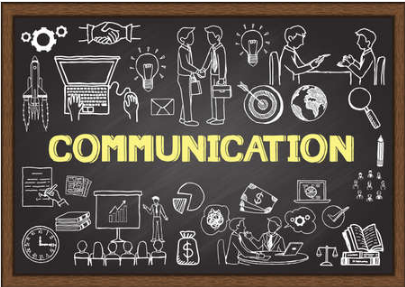- Home
- Continuous Improvement Certification Online
- Communication in Total Quality Management
communication in total quality management Explained
a resource, an asset: COMMUNICATION IN TOTAL QUALITY MANAGEMENT

Communication is a resource, an asset that must be managed.
Communication in Total Quality Management is an important factor for an organization to function properly, establishing adequate processes.
For efficiency in an organization, all the people must be able to convey their message properly. Communication is the activity of conveying information through the exchange of thoughts, messages or information as by speech, visuals, signals, writing or behavior. Emphasis on communication came from human relation approach of management.
Quality management is an area where work is
done under more pressure than in any other sector. Communication within quality
management is not similar to classical communication, because of the
specificity of this sector. For successful Quality Management System, the
existence of an effective communication between stakeholders is a vital
element.
Communication is essential for achieving the objectives of an organization successfully, including those related to quality. Communications can be internal or external. Both are referred in the standard, in section 7.4.2 for internal communication, and external communication in the section 7.4.3.
Internal communication is generated between the different levels of the organization. It must ensure the understanding of the objectives of the quality management system (QMS) and help individuals and groups guide their efforts towards their achievement.

The external communication is one that go through outside the organization: clients, users, suppliers, control bodies, shareholders, etc. Requirements 8.2.1 and 8.4.3 of the standard speak of communication with the customer and suppliers respectively, so by addressing this requirement you will have already advanced work on subsequent requirements.
In the evolution of QMS, the need to adopt internal communication models and systems that guarantee at least information flows within and between processes has been recognized. In addition, they have contemplated documentation systems that are controlled flows of key information for the performance of tasks and guarantee dynamics that enable continuous improvement.
communication requirements according to iso 9001:2015

The communication requirements according to ISO 9001: 2015 are found in clause number 7 on Support requirements.
This clause includes all the requirements of the processes that an organization needs to support the methodologies for the implementation and ISO 9001: 2015 certification of its Quality Management Systems.
These requirements also ensure the ability of an organization to provide products and services that meet quality requirements and improve customer satisfaction and subsequent loyalty. In today's article we will talk about how this support of clause 7 on communication requirements according to ISO 9001: 2015 works.

Apart from the communication methodology, there
are many important resources for the Quality Management System of an
organization, they include people, infrastructure, competition, operations
environment, resources, others.
The requirements establish that the organization will determine the internal and external communications pertinent to the Quality Management System.
Although it may seem like a simple application process, it is a very important part of the correct implementation of the Quality Management System in an organization, since they must consider what are the appropriate communications for their processes.
communication in TQM, five elements to be included

These are the 5 elements that organizations must include in their communication plans to comply with the communication requirements according to ISO 9001: 2015:
1. What are we going to communicate? You will most likely need to communicate about nonconformities of an organization's products or services.
2. When are we going to communicate it? It is important to know the time processes and to know if our clients are informed about our products and services.
3. Who is the communication aimed at? The customers and stakeholders that an organization must communicate with.
4. How will you communicate? There are many ways of communication and they should vary depending on the information we want to obtain and for the different stakeholders.
5. Who will communicate? This process will vary depending on the information that we are going to communicate or the seriousness and importance of the information.
It´s important to define a good Quality Management System to have a good communication plan that works in each organization regardless of its type and size.
This and more information can be found in InArtifexYou, if you want to know more about communication in total quality management system, and various topics.